
Fast Mimicking Diet: What it is, why to try it (or not) & how to sign up!
A few months ago I read The Longevity Diet by Dr. Valter Longo—I highly recommend this book to anyone wanting to learn a way of eating that is well-balanced and linked to a higher degree of health and longevity. I was intrigued by his findings regarding how a low-calorie, vegan diet could mimic the benefit of fasting without muscle-wasting and other negative side effects of a prolonged fast. Over the last 20 years, he has been studying how to use food to promote healing and developed a product line to make it easy to add the Fast Mimicking Diet to a 5-day protocol for the benefits of metabolic reset and stimulating autophagy (cellular clean-up) and cellular rejuvenation.
Several things impress me about his company, L-Nutra:
More information on this can be found on the Prolon Site: https://prolonlife.com/pages/the-science
Here’s what I learned from my test of the 5-day fast!
For this test, my husband Charlie agreed to do the program with me. This was important to me because he is a picky eater and his evaluation of taste and texture would help me rate suitability for a broad range of patients. It was also important because he’s never done any fasting before. I wanted to see how he handled the calorie-restricted diet as well.
Today as I’m writing this is Day 5, I will add to this around Day 7 to capture afterthoughts and later observations but here are some initial results.
Day 5:
I have done calorie restrictions and lighter fasting before. While I did feel hungry here and there, throughout the 5 days—by snacking consistently on the items in my box throughout the day I was never starving, lightheaded or woozy! Day 4 and 5 I did experience some headaches and body aches but they were all localized around the areas of past injuries—I’m assuming this is part of the repair process. None of it was bad enough to make me think about taking something, it was more like a dull ache than pain. The texture and flavors of the items are ok—it’s freeze-dried soups, bars, and crackers. The crackers and olives were my favorite! There are a couple of chocolate-covered rice crisps throughout the 5 days to give a little sweet something.
Charlie was hungry a lot throughout the 5 days—a couple of times he had to add some extra food (a small amount of nuts or a bite or two of cottage cheese). This may have added to the sense of being hungry but he didn’t give up and got through it.
We both limited our physical activity and chose a time when we could rest if we felt like we needed it during the 5 days. I wouldn’t have done a workout but my energy was fine through the 5 days. Charlie definitely slept more but it’s unclear if that was due to napping to avoid feeling hungry or because he was that tired from the process.
The next few days post fast will be telling. I do know I appreciate that I am back to the weight I feel best at. I feel a blossoming of energy and want to work out!
As recommended, we would repeat this process 1x per month for 3 months and then go to 2-3x per year for maintenance. Time will tell if Charlie will do this with me again next month.
Now—who should not do this?
Day 7 update:
I’ve been noticing more muscle soreness after increasing my workout intensity over the last couple of years. I added in a pretty tough workout to see if the fast changed this. I can tell my metabolism is working more efficiently—I’ve actually dropped another pound even though I’m eating my normal amount and another ¼” off my waist measurement. Charlie noticed his clothes fit better—and he’s said he’s willing to do this all again next month as we follow the initial 1x per month for 3 months as recommended by Dr. Longo.
Order your kit HERE (external site)
If you are diabetic, pre-diabetic, or are under treatment by an MD for any condition please contact the office for a FREE CONSULT to determine if this program is right for you.
Summer Healing Herbs: Lily Bulb & Artemisia Tea

It’s tempting to reach for a cold glass of water or sweet tea in this hot weather, but those ice-cold drinks may not be the best way to stay fit and hydrated! In many ruggedly hot climates, the tradition is to drink hot teas that are lightly sweetened to help stay cool. How does that work?
There is some evidence that drinking a warm beverage increases evaporative heat loss potential and, therefore, reduces body heat storage in dry environments that allow for sweat evaporation. The keywords here are dry environments. Think: desert conditions—so when it’s hot and dry that hot drink will help you cool off more. In hot and humid climates the humidity prevents the sweat from evaporating so the benefit of the hot drink won’t be as great unless there is a breeze helping to increase the evaporation or sweat.
As Tolkien wrote in The Lord of the Rings, “Pay heed to the tales of old wives. It may well be that they alone keep in memory what it was once needful for the wise to know.” Oral tradition should not be dismissed out of hand, simply because it initially strikes us as absurd.
In the heavy humid heat of a Kentucky summer, I enjoy this recipe from southern China—this herbal tea made of lily bulbs and artemisia helps improve circulation, drain excess dampness, support the lungs, and boost immune function. It can be enjoyed hot or cool but preferably not iced (and a little honey or stevia is fine). Given that our weather is sometimes humid and sometimes dry, let the weather determine your drink temperature for optimal cooling.
Other teas to help beat the heat include: hibiscus, mint, chrysanthemum, and tangerine peel—either alone or served in pairings.
Plastic-Free July

This article was sent to me by my brother. It is eye-opening and has a shockingly bad prognosis for the future of our planet if we don’t start thinking about ways to reduce our reliance on plastic and look hard at the reality of the hidden costs of recycling:
Quillette Article: Recycling Plastic Is a Dangerous Waste of Time
Change doesn’t happen overnight and it doesn’t happen because the government mandates it. It happens because people change things with how they spend their money. We’ve seen this in the incorporation of stevia and other healthier sweeteners in food, a broader selection of gluten-free options, etc. It also happens because each person does what they can to promote that change. Here are some little ways we at Raja Wellness will be working to reduce plastics:
In my private life here are some things I do to reduce my plastic use:
There are many ways we can make changes for the better—while supporting local farmers and artisans, and choosing natural and organic options!
Our acupuncture team at Raja Wellness provides a diverse set of experiences and skills. As the owner and clinical director, I have made it a point to find others who share my work ethic and passion for healing. In addition, I look for a diverse skill set. I wanted to take a moment to review our dynamic and exceptionally talented team.
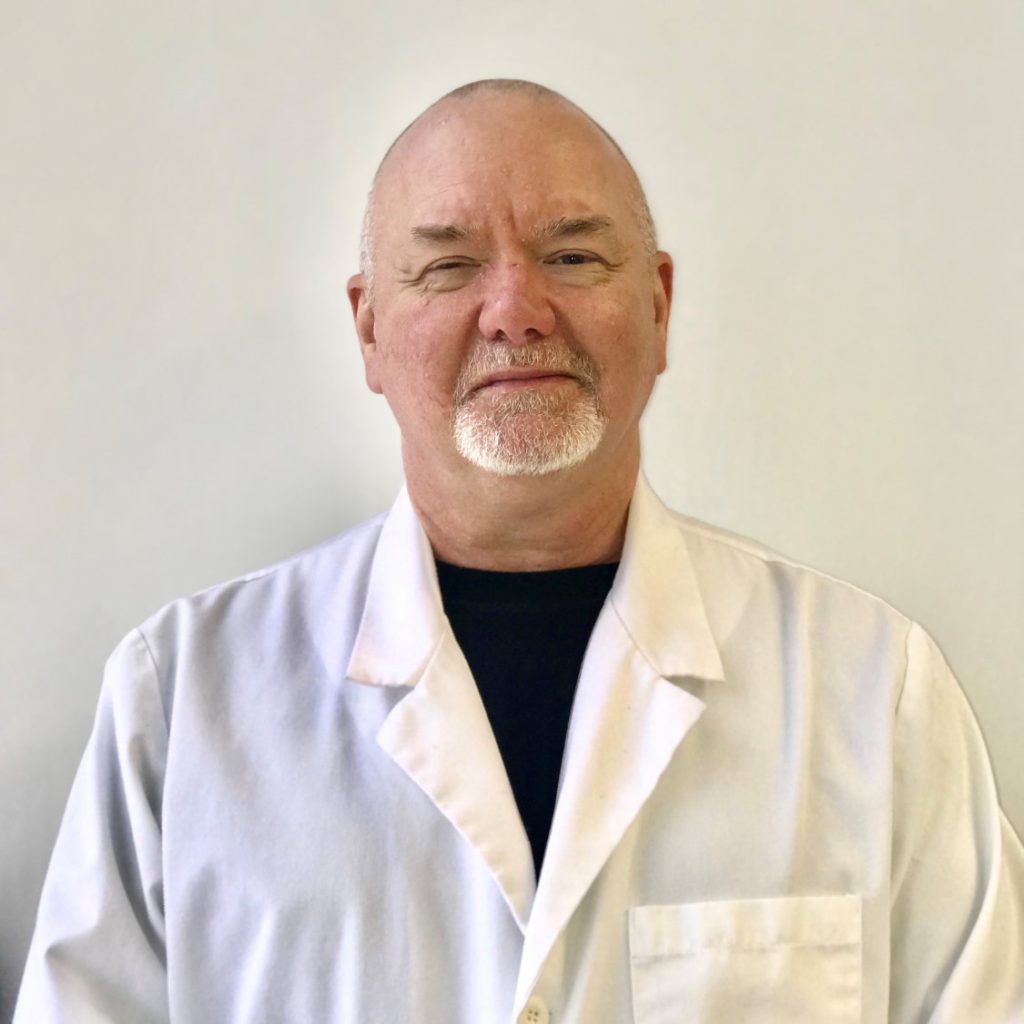
Robert Cecil, LAc - Robert has a passion for healing and a talent for orthopedic and neurological issues. He works with a lot of our veteran patients addressing a diverse range of conditions from chronic pain to neuropathy to PTSD. In addition, his experience with Frequency Specific Microcurrent and Estim scar release techniques provides additional healing modalities in addition to acupuncture.

Fielding Carroll, LAc - For those dealing with chronic digestive disorders such as Chrohns and IBS, Fielding has developed a unique approach combining personalized nutritional therapy with acupuncture to help people radically change their digestive health. Patients report relief from decades-long issues after only a handful of treatments. He is also skilled in Soliman’s Auricular Allergy Treatment (SAAT), offering significant allergy relief from conditions like Alpha-Gal.
Our newest member, Jason Macko, LAc is trained in the 5 element technique, offering a gentle and integrated approach to complex conditions. In addition, he will be part of our team offering SAAT for Alpha Gal and other allergies. He is passionate about helping athletes optimize their performance and recover quickly from injuries. He is also skilled at handling complex cases and helping people reach optimal health.
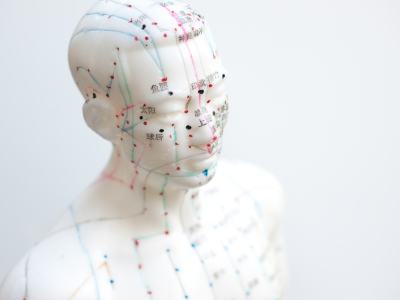
Together, we offer a wide range of expertise and services to address the mental and physical well-being of our patients. Considering acupuncture as part of your healthcare regimen can be a transformative step toward holistic wellness! By seeking the expertise of a skilled acupuncturist, you embark on a journey to balance and restore harmony within your body, mind, and spirit. Whether you're seeking relief from pain, stress reduction, chronic issues, or overall health improvement, acupuncture offers a gentle yet effective approach rooted in ancient wisdom.
Your path to optimal health starts with a visit to an acupuncturist—discover the profound healing potential of acupuncture today!
Yours in Health,
Jenny-Marie Greenough, LAc
Why are we so passionate about mental health at Raja Wellness?
The link between mental health and cardiovascular health is quite significant. Stress, especially chronic psychological stress, has a profound impact on the cardiovascular system. When the “stress response” is activated, the body secretes glucocorticoids, epinephrine, and other hormones, while inhibiting the secretion of growth hormone, insulin, and reproductive hormones. The sympathetic nervous system is also activated, leading to increased heart rate and blood pressure, among other physiological changes that divert blood to areas needed for immediate survival, such as the muscles and lungs, and away from non-essential areas like the gut and reproductive organs. This response is adaptive in the short term, but chronic activation due to chronic stress can lead to serious cardiovascular issues such as hypertension, atherosclerosis, and myocardial ischemia.
This connection between mental health and cardiovascular health highlights the intricate intertwining of psychological and physiological factors. The body's response to chronic stress can have detrimental effects on the cardiovascular system, emphasizing the importance of managing and addressing mental health to promote overall well-being, including cardiovascular health.

Acupuncture has many benefits for cardiovascular health:
1. Stress Reduction: Stress is a known risk factor for cardiovascular diseases. Acupuncture has been shown to modulate the body's stress response, potentially reducing the impact of stress on the heart and blood vessels.
2. Blood Pressure Regulation: Studies indicate that acupuncture may help in regulating blood pressure. By targeting specific acupuncture points, practitioners aim to optimize blood circulation and blood pressure levels, contributing to better cardiovascular function.
3. Inflammation Management: Chronic inflammation is closely linked to cardiovascular conditions. Acupuncture may exert anti-inflammatory effects, potentially reducing the systemic inflammation associated with heart disease.
4. Enhanced Circulation: The stimulation of acupuncture points is believed to enhance microcirculation, improving blood flow to vital organs including the heart. Enhanced circulation can promote heart health and overall cardiovascular function.
5. Complementary Therapy: Acupuncture is often used as a complementary therapy alongside conventional medical treatments for cardiovascular issues. It may help alleviate symptoms, improve overall well-being, and enhance the effects of standard cardiovascular care.
While acupuncture has clear benefits for cardiovascular health, we recommend individuals consult healthcare professionals before integrating acupuncture into their treatment regimen. Moreover, acupuncture alone may not be enough for people dealing with chronic stress.
Learning to manage our stress is a key part of maintaining heart health—and that’s where professional mental health care is so important as part of your overall wellness.
Herbal formulas also play an important role in heart health. Many formulas have been shown to reduce cholesterol and blood lipid levels, decrease inflammation, and increase peripheral circulation. For example, Clear Mind Formula is one of my favorite herbal formulas for heart health, especially here in Kentucky because of its natural antifungal and antimicrobial properties. This is a raw herbal concoction that we make in-house. We do recommend consulting with a trained herbalist before incorporating any herbal remedies into your care plan.
or
For more information, please don’t hesitate to call us at 270-506-3853 today!
References:
1. Wayne PM, Kaptchuk TJ. Challenges inherent to t'ai chi research: part II-defining the intervention and optimal study design. Journal of Alternative and Complementary Medicine. 2008;14(2):191-197.
2. Fu, C., Zhao, N., & Liu, Z. (2013). Chronic pain: acupuncture and related therapies. Springer Science & Business Media
3. Chen J, Ye C, Yang Z, Zhang C, Li P, Xu B, Wu A, Zhang X, Xue X. Erchen decoction to reduce oxidative stress in dyslipidemia phlegm-dampness retention syndrome mice: In vivo mechanism revealed by metabolomics (liquid chromatography-mass spectrometry). Phytomedicine. 2023 Jul;115:154808. doi: 10.1016/j.phymed.2023.154808.
Acupuncture has gained popularity recently for its benefits in improving immune system function. This holistic approach involves the insertion of thin needles into specific points on the body to stimulate energy flow and restore balance. While acupuncture is commonly known for its effectiveness in pain management, it also offers numerous advantages for boosting the immune system.
One of the primary benefits of acupuncture is its ability to reduce stress levels. Stress has a significant impact on the immune system, weakening its response to pathogens and increasing the risk of illness. Acupuncture helps to regulate the body's stress response by promoting the release of endorphins, which are natural painkillers and mood enhancers. This, in turn, reduces stress and anxiety, allowing the immune system to function optimally!
Furthermore, acupuncture has been found to enhance the production of immune cells, such as natural killer cells, which play a crucial role in defending the body against viruses and cancer cells. A study published in the Journal of Traditional Chinese Medicine found that acupuncture increased the activity of natural killer cells, suggesting its potential to improve immune system function.
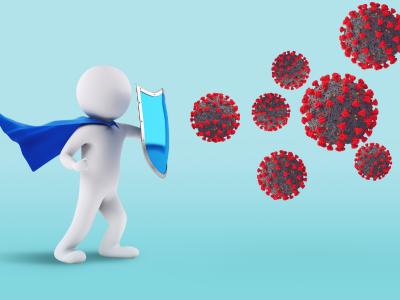
In addition to boosting immune cell production, acupuncture also improves circulation. The flow of blood and lymphatic fluid is essential for the proper functioning of the immune system, as it helps transport immune cells and nutrients throughout the body. By stimulating specific acupuncture points, blood circulation is enhanced, allowing immune cells to reach their destinations more efficiently.
Moreover, acupuncture has been shown to regulate inflammation, a key factor in immune system function. Chronic inflammation can impair immune responses and lead to various health conditions. Research published in the Journal of Neuroimmunology demonstrated that acupuncture can modulate the production of inflammatory cytokines, reducing inflammation and promoting a balanced immune response.

In addition to the benefits above, acupuncture has been known to also assist with other things that may contribute to improved immune function:
Balancing Energy Flow (Qi): According to traditional Chinese medicine theory, acupuncture helps balance the flow of vital energy, or "Qi," through the body's meridians. When Qi flows smoothly, it is believed to support overall health, including immune function.
Stimulating Lymphatic Flow: The lymphatic system plays a crucial role in the immune response by filtering out toxins and waste products. Acupuncture may help stimulate lymphatic flow, aiding in the removal of these substances.
Improving Sleep Quality: Quality sleep is essential for a healthy immune system. Acupuncture may help improve sleep patterns and address conditions like insomnia or sleep disturbances that can weaken the immune system.
Supporting Organ Function: Acupuncture is believed to influence the function of specific organs, which can indirectly impact immune health. For example, the spleen is considered important for immune function in traditional Chinese medicine, and acupuncture may be used to support its function.
It is important to note that acupuncture should not be considered a standalone treatment for immune system disorders or diseases. It is most effective as a complementary therapy alongside conventional medical treatments. Consulting with a qualified acupuncturist and healthcare professional is crucial to ensure a comprehensive and personalized approach to immune system support while supporting your specific needs and goals.
Book an appointment HERE with one of our highly qualified Acupuncturists today!
References:
1. National Library of Medicine: Acupuncture and Immunity
It’s looking like Newvember with all the great changes we have coming!
Raja Wellness welcomes Fielding Carroll, LAc! Those of you coming in to see us for allergy treatments recently have probably already met Fielding. Fielding is a native Kentuckian and a classmate of mine from Acupuncture school. I am happy to welcome him aboard to our team! He’s been diligently learning the nuances of SAAT (our specialty acupuncture technique for alleviating allergies of all kinds that was pioneered by Dr. Soliman). In addition to his focus on mastering this new technique, he brings a wealth of experience in the treatment of digestive disorders and health coaching embracing food as the first medicine and foundation of better health! In addition to offering acupuncture services, personalized nutritional coaching is also available with Fielding.
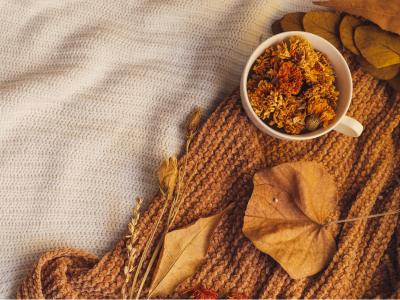
Fall wellness is a frequent topic for us—as the days get shorter and colder, it’s important to fuel our immune systems with adequate rest, plenty of fresh fruits and veggies and to reduce junk foods from our diet. Our gut and immune systems are intimately intertwined and for some people, probiotic support may be helpful in addition to meditation, immune-supporting herbs, and preventative acupuncture care.
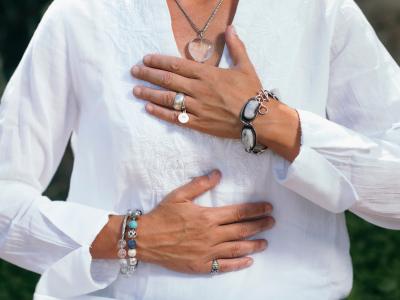
As we move forward toward 2024, we want to let our patients know our prices will be going up. We strive to offer a range of services at affordable prices and as part of that commitment, we are announcing this change early to give patients the option to “stock up” on treatments at our current price. All patients currently scheduled will pay the price at the time their service was booked. Current patients can pre-pay up to 5 visits each at our current rates, but those visits must be used before Mar 31, 2024. Our new prices will go into effect Dec 1, 2023 for all visits booked after that date.
In addition, you will see some new options in our services including nutrition coaching with Fielding, FSM-only treatments, BrainTap sessions & Glow sessions (combined light therapy & FSM for renewed skin). With those new options, we are also testing out some membership options, giving patients access to a select combination of treatments monthly at a reduced cost for members. Watch your emails for early access to these!
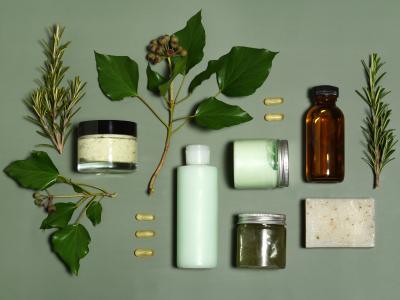
Our online store is also coming back soon with some changes!
At Raja Wellness, we continually strive to make your shopping experience as easy and affordable as possible.
CBD is legal in all 50 states, yet some banks and credit card processors impart their judgments on access to these legal products by refusing to process transactions involving the sales of CBD products of any kind. Their oversight unfortunately incorrectly flagged our blog about the health benefits of CBD for osteoporosis as a “product for sale” and our processor held our funds and thus forced us to stop using them as a processor. This has been a gray area for many years and is one of the reasons you see CBD in our offices but not in our online store. Unfortunately, the list of companies that allow this is very short. Please bear with us as we continue to search for a more fair, CBD-friendly payment processor that also allows us to offer you the best prices and convenience.
In honor of Father’s Day, I wanted to take this opportunity to highlight how acupuncture and TCM helps men’s health; and to remind men that they need to take care of themselves too. Statistically men are less likely than women to seek health care and married men tend to see the doctor more often than single men, but still less often than women (even accounting for pregnancy needs). One of the biggest complaints I hear from male patients is they are too busy or they don’t want to walk out with another pill to take.
I started this with a search of “top reasons men go to the doctor” and could only find research and articles on why men should go to the doctor—it seems we haven’t really looked at why they do go when they do in much detail. I did find this gem from The Cleveland Clinic and their support of the MENtion It Campaign—an initiative to encourage men to seek care. Despite the fact that the majority of men want better health to care for their families, less than half of those who listed that as a priorit, seek regular care.
The top reasons why? They don’t want to know they have to make a lifestyle change, or fear of finding out what they have. We get it—but there are better options than neglecting your health. And if you don’t want to take a pill when things are going wrong, yes, you will need to make a change. But aren’t you and your family worth it? So if you have an issue—MENtion It! We are here to listen.
One advantage acupuncture has over other options is we treat the whole body during a session—you may be coming in for back pain or knee pain, but we will also be addressing sleep, digestion, immune function, endocrine balance and more. If you think about it, it is truly a great value! Similarly, our approach using herbal formulas is to select a formula that addresses as many issues at once as possible—so you can take one thing and have multiple issues get better. And unlike just treating a symptom, when we are able to get to the root of the problem, and as a result, you feel better and stay that way even without being on herbs all the time.
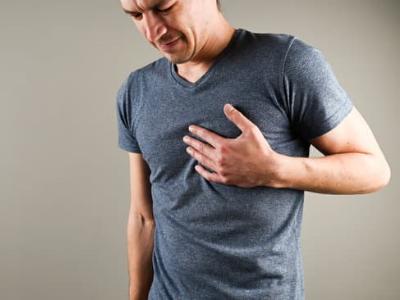
Menopause gets a lot of notice, but did you know men go through a similar process called Andropause? First written about in 1946, a landmark paper in JAMA entitled, “The Male Climacteric” characterized it with nervousness, reduced potency, decreased libido, irritability, fatigue, depression, memory problems, sleep disturbances, and hot flushes. Hypogonadism is broad scientific term and it refers to a “clinical syndrome caused by androgen deficiency, which may adversely affect multiple organ functions and quality of life.”1 Decreasing testosterone levels are linked to a number of disease processes and shorter life-span. The traditional approach is supplemental testosterone, but acupuncture and traditional East Asian herbal medicine have also been shown to regulate testosterone levels in the body, improve mood, sleep, endocrine function and cardiovascular health.
Speaking of hearth heath—statistically 1 in 4 men will die of heart disease and it’s complications. Men tend to develop heart disease earlier in life than women and are less likely to make the lifestyle changes necessary to reverse heart disease. Coronary artery disease is one of the most common forms of heart disease among men and responds incredibly well to lifestyle and diet changes. Tons of this research can be found here.
JAMA: Intensive Lifestyle Changes for Reversal of Coronary Heart Disease
If you made it this far into the article, congratulations! As a thank you for being loyal reader, use the code “mentionit” for 10% off you next order from our website. Discount code valid 6/15/23 - 7/15/23. Not valid with other offers, not valid for gift cards. Other restrictions may apply.
Did you know half of men who have heart attacks have no symptoms before it happens? Or perhaps, didn’t know they were having symptoms. One of the earliest signs of heart disease is erectile dysfunction. Another early sign of heart disease is new onset anxiety2. Mental health issues and heart disease are often tangled together and in many cases of anxiety being caused by low grade (not yet detectable) heart disease, the typical anxiety medications don’t work well. Acupuncture is very effective for both mental health and cardiovascular health—and as we mentioned above, can address both issues in the same sessions!
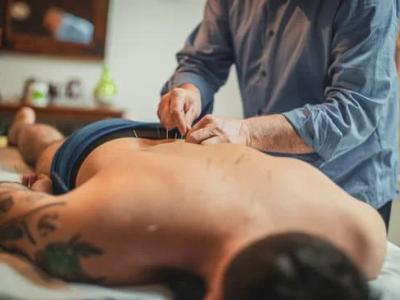
Last, but not least is prostate health. Benign Prostate Hyperplasia responds very well to acupuncture and herbal therapies3. Acupuncture can increase urinary output, reduce the size of the prostate, and beyond hyperplasia is effective for treating Prostatitis as well.
Harvard Study on Acupuncture Relieving Prostatitis Symptoms
These results tend to be long-lasting after the initial course of treatment. Prostatitis alone is responsible for over 2 million doctors visits a year, and is often recurring and has no clear cause. So even if we can’t convince you to see your doctor once a year (yet), schedule an appointment with one of our acupuncturists, check out our online resources, and remember—Dads are an important part of the family and it’s important they get the care they need so they can take care of others!
1 Singh P. Andropause: Current concepts. Indian J Endocrinol Metab. 2013 Dec;17(Suppl 3):S621-9. doi: 10.4103/2230-8210.123552. PMID: 24910824; PMCID: PMC4046605.
2 Celano CM, Daunis DJ, Lokko HN, Campbell KA, Huffman JC. Anxiety Disorders and Cardiovascular Disease. Curr Psychiatry Rep. 2016 Nov;18(11):101. doi: 10.1007/s11920-016-0739-5. PMID: 27671918; PMCID: PMC5149447.
3 Zhang W, Ma L, Bauer BA, Liu Z, Lu Y. Acupuncture for benign prostatic hyperplasia: A systematic review and meta-analysis. PLoS One. 2017 Apr 4;12(4):e0174586. doi: 10.1371/journal.pone.0174586. PMID: 28376120; PMCID: PMC5380320.
May is a month loaded with great awareness campaigns—most of which we see routinely in our clinic: Lyme, Mental Health, Ehlers-Danlos Syndrome, and Celiac Disease. Two of those are largely genetic—Celiac Disease and Ehlers-Danlos Syndrome—and while we can’t change your genes, acupuncture, herbs, and appropriate nutritional support can greatly improve the quality of life for patients with these conditions.
Our favorite supplements for Ehlers–Danlos Syndrome are available below; but please note these options are not all vegan or gluten-free so please contact our office for help choosing replacement products for this protocol if you need to avoid mammal or gluten:
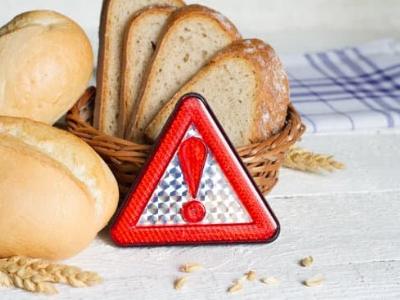
Celiac Disease & Gluten Intolerance—What’s the Difference?
As far as Celiac Disease, there is a wide range of experiences: from those with an allergy to gluten creating the sensitivity, to those with true Celiac disease who simply won’t be able to effectively process gluten, to those who aren’t allergic—but react to the lectins in gluten and have an inflammatory response to these grains. While conventional thinking says allergies can only be managed and not treated, we are seeing people’s allergies actually go away (even as measured with IgE in the bloodwork) as a result of a highly specialized technique called “Soliman’s Auricular Allergy Treatment” pioneered by Dr. Nader Soliman, MD, LAc. While this technique is most widely known for helping people with alpha-gal allergies (an allergy to a carbohydrate found in mammal products triggered by tick bites) it actually is effective for most allergies.
We have helped people with nut allergies, dairy allergies, animal allergies, and even severe environmental allergies—not just pollen, dust, and molds, but more rare allergies such as sunlight and water! Gluten allergies also respond very well to this treatment; which brings me back to my earlier point about allergies vs. genetic limits vs. inflammatory response to other elements of gluten. For someone coming in with just a gluten allergy, this treatment will normally allow them to eat gluten without a reaction if they had a measurable IgE response to gluten in the past, and in many cases, this will disappear. Those with a genetic intolerance (what we refer to as “true Celiac”) still can’t eat gluten routinely after SAAT, but if they are accidentally exposed to gluten, they report that the reactions are greatly reduced. A similar effect is reported among those with lectin intolerance; they can’t always eat as much as they want, but small amounts and cross-contamination don’t cause the severe reactions they used to have.
For those with true Celiac—the reduced reactivity is a welcome relief; allowing them more options to enjoy meals with friends and family who may not realize what “gluten-free” really means even with the best intentions. For example, many people know that wheat has gluten, but they don’t realize most beers contain gluten. Foods like soy sauce and many spice blends contain small amounts of gluten as well, and for people with Celiac disease, even small amounts can create distressing reactions. Worse yet, labeling requirements are very bad in the US and many products contain unlabeled sources of gluten! In more severe cases, even topical exposure to gluten through lotions, soaps, or hair care products can create a reaction (though so far those reactions seem to be greatly reduced even in the most severe cases after SAAT).
Have someone in your life who needs to be gluten-free?
We created this handy guide of safe foods and hidden sources of gluten for reference!
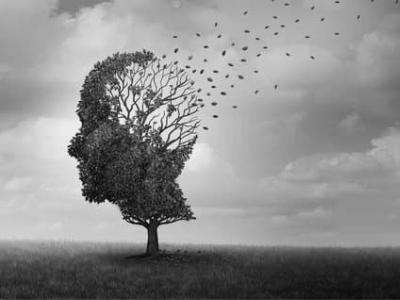
The Hidden Cost of Lyme Disease
Lyme Disease may be one of the most pervasive and least frequently diagnosed conditions in the US. The current standard test, the ELISA test is estimated to be 70% accurate, but some independent testing has shown the current standard of combining an ELISA test with a Western Blot Test (which is reported to be 99% accurate) may be off more than 50% of the time, especially in cases of neurological Lyme. Worse yet, most doctors haven’t read the research about how a history of concussion or whiplash can make someone up to 80% more likely to develop chronic neurological Lyme because of damage to the blood-brain barrier. If there are other underlying chronic pathogens such as Epstein Barr Virus or Covid, those numbers very quickly get much worse. Diagnoses of Lyme Disease from Columbia University Medical Center
So in a month of Mental Health Awareness—why am I writing about misdiagnosed Lyme?
“People with psychiatric disorders related to Lyme disease may experience symptoms like fatigue, depression, anxiety, brain fog, rage, sleep disturbances, Bipolar disorder, and more. The longer that Lyme disease goes untreated, the more likely a patient is to develop these symptoms and disorders.”
The Effects of Lyme Disease, igenex.com
Chronic Lyme can also cause autonomic neuropathy. In these cases, the range of symptoms that can emerge is extremely broad and often leaves providers perplexed because the usual tests for those conditions will all be “normal”. Autonomic Neuropathy, Medscape
Arguably this subject can fill a book (one that I am working on) but suffice to say, many of the treatment strategies that are key to recovering from Lyme are beneficial for mental health, even in the absence of Lyme. Without going too far down into the weeds, it’s important to feed the body real food, minimize sugars (even hidden sugars like grains and breads), focus on nutrient-dense veggies for about 70% of your diet, and then find a balance of grains, fruits, and meats for the remaining 30% that keeps you feeling good. The same goes for mental health—better nutrition supports better mental health. In addition, nutrition to support the mitochondria in the cells can make a huge difference. Some of our favorites can be found here:
Feeling overwhelmed with how to eat healthy? Check out our free Facebook group, Raja Wellness Ways to Health for recipes, tips, inspiration, and to share those techniques that work for you!
Need one-on-one support? Clean Good Eats is a great resource—they have group classes on healthy cooking, or you can reach out to Dr. Sakinah Bunch for private coaching.
Yours in Health,
Jenny-Marie
Millions of women suffer from gynecological complaints each year. Endometriosis (11% of women in the US) and fibroids (26% of women in the US) are two of the most common and painful issues women face. That’s over 30 million women in the US alone and these numbers are arguably under-reported as many less severe cases are often dismissed as PMS, depression, or part of some other syndrome. Conventional biomedicine has little to offer women in these cases beyond hormone therapies (often with intolerable side effects) or surgical options that can scar and affect future fertility, or as a last-ditch effort—simply offering a hysterectomy (often taking the ovaries as well) and throwing the woman into early menopause. Symptoms of these conditions can be painful and quite literally, draining, as women struggle with heavy, unrelenting bleeding.
These are not conditions new to women. Endometriosis was first identified 300 years ago in Western medical texts, but references to the condition trace back over 4000 years under the older diagnosis “hysteria”. Similarly, uterine fibroids have a long history. Uterine fibroid lesions were initially known as the “uterine stone.” In the second century AD, they were called scleromas. The term fibroid was first introduced in the 1860s. Uterine fibroids are the most common pelvic tumors among women of reproductive age, affecting more than 70% of women worldwide, particularly women of color”1. It is not surprising traditional medicines have ways to treat these conditions.
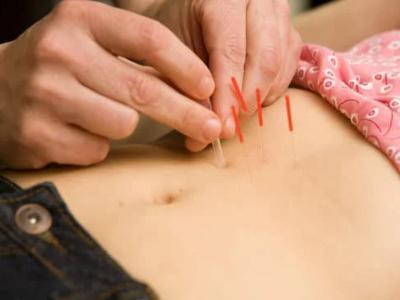
In my practice I have found acupuncture and herbs together provide the best treatment outcomes for these conditions, and if only one can be used, the herbs are the more important piece (although it takes longer for them to achieve the same results when used without acupuncture). Fortunately, I have been able to work with patients who not only were able to report their progress through improvement in their physical symptoms but also provided me with ultrasounds and other diagnostics from their OBGYNs.
In one case of a woman in her 40s—her uterine fibroids shrank on average more than 7mm each in a 3-month period, and after 6 months had no visible blood supply. She was no longer a candidate for surgery as her fibroids were effectively “cured”. 4 years later, even without maintenance herbs—her fibroids have not returned. Her heavy periods, severe abdominal pain and fatigue are a thing of the past.
In another case, a woman in her 20s came in for endometriosis and fibroids. Hormone therapies had failed and she was hoping to retain her uterus and chances to have children in the future but she was living with crippling pain that radiated from her abdomen to her back. She described it as “living with barbed wire wrapped around her torso and her spine—like I am being torn from the inside out”. In addition, she had fibroids and chronically heavy periods resulting in fatigue and anemia. To top it all off, she dealt with the emotional stress of the constant pain and fear of losing her chances at motherhood. Within 3 months of treatment, her periods were more normal and the pain was no longer constant but limited to around ovulation and onset of her menses. At 6 months, her cycles were normal and she was pain-free! She had follow-up imaging to evaluate her need for surgery and while endometrial tissue and fibroids were still present, the fibroids were visibly smaller and the endometrial tissue appeared less pervasive on imaging than it had 6 months before when she started treatment. At 9 months she was due for laparoscopic surgery to remove some of the endometrial tissue, and remarkably only 40% of the expected tissue was found and the fibroids were 70% smaller than on the initial imaging. The doctors were able to remove the excess endometrial tissue and fibroids easier than expected. 6 months later she was pregnant with her first child and now has a happy, healthy little girl, and her cycles continue to be normal.
Cases like these highlight why herbs and acupuncture have been used for thousands of years. Together they help women optimize their health safely and effectively. In combination with modern medical techniques, they can give even the most severe cases relief. I highlight the second case in particular because I don’t believe the herbs and acupuncture alone could have reduced the damage enough to help her get pregnant—perhaps if we had started the herbs years earlier before the progression was so severe. It’s important to work with all available resources for optimal health care. So please, if conventional treatments have failed or you want a more natural alternative—find an experienced acupuncturist and herbalist to work with!
Call us at 270-506-3853 or click here to book an appointment today!
1 Qiwei Yang, Michal Ciebiera, Maria Victoria Bariani, Mohamed Ali, Hoda Elkafas, Thomas G Boyer, Ayman Al-Hendy, Comprehensive Review of Uterine Fibroids: Developmental Origin, Pathogenesis, and Treatment, Endocrine Reviews, Volume 43, Issue 4, August 2022, Pages 678–719, https://doi.org/10.1210/endrev/bnab039
In honor of Black History Month, I wanted to share some of the stories of how acupuncture came to be a legitimate practice in the US largely through the activism of some unlikely proponents—the Black Panthers and the Young Lords. Our medical history is full of examples of people of color being exploited by the medical industry, of people suffering in experiments because it was assumed their skin color prevented them from “really feeling pain” and other abominations that continue in less obvious ways to impact access to effective and safe health care for people of color. It took radical, focused, and illegal actions to improve access to health care for people of color in New York, and the Lincoln Detox Center still stands as an inspiring story of community activism for positive change. The model of the Lincoln Detox Center for treating addiction still stands as the gold standard for effective treatment.
In the 1970s acupuncture went from something in the back alleys of Chinatowns across the US to a vital element in community clinics founded and run by leaders in the Civil Rights community and became a subject of national interest after Henry Kissinger’s seminal trip to China, where doctors demonstrated acupuncture anesthesia during surgery. In 1974, California became the first state to openly license acupuncture after public outcry following the arrest of Dr. Miriam Lee. If it hadn’t been for the very public use of acupuncture in these community clinics and building awareness of the efficacy of acupuncture, I doubt the public outcry would have been very loud, and acupuncture might still be unregulated (as it is in a handful of states including Alabama, Oklahoma, and South Dakota). Thanks to these pioneering efforts, acupuncture has become recognized as a primary treatment option for pain, addiction, anxiety, and more.
Of note, at that time in China, acupuncture was part of an outreach to provide basic health care to the poor, rural regions of the country as part of the Barefoot Doctors. Elements of the traditional practices of acupuncture had been simplified into a standardized practice by Chinese physicians called “Traditional Chinese Medicine”, which is the foundation of most acupuncture training here in the US. One doctor who was on one of these trips to China, Tolbert Small, MD observed the acupuncture demonstration and asked for treatment for himself. He was intrigued enough to ask for more information. He was able to record 4 hours of lecture on the use of acupuncture and estim (electrical stimulation), procure some needles and an estim machine, and proceeded to practice on himself and his family after his return from China. Back in Oakland, he obtained an English translation of a Chinese Medicine text to study and expand his understanding of acupuncture.
He then incorporated acupuncture, mostly electro-acupuncture, into his practice in his community clinic and pioneered the use of acupuncture for the treatment of the symptoms of sickle-cell anemia. Dr. Small primarily used acupuncture to treat various kinds of pain. He was also pivotal in bringing national awareness to the plight of people with sickle-cell anemia and garnering more funding for testing and research of treatment. He even used acupuncture to ease his wife’s labor pains during two of her deliveries and may have been the first MD to do so in the US. To learn more about Dr. Small, I recommend this interview.
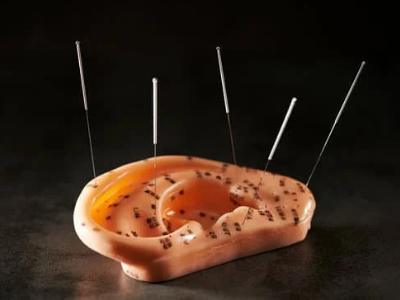
On the other side of the country in the South Bronx, Matulu Shakur (stepfather of Tupac Shakur) was one of the providers in the Lincoln Detox Center who heard about acupuncture for the treatment of addiction in Hong Kong in a New York Times article, and took an interest. He went to Chinatown to purchase acupuncture kits and books from doctors, then went to Montreal for training. There he studied how to treat addiction with acupuncture and later traveled to China, Switzerland, and other countries where acupuncture was used more openly. He was later licensed in California as an acupuncturist and founded an acupuncture school in the Bronx. His work along with those like Michael O. Smith, MD, DAc, lead to the development of the NADA protocol—a simple 5-point ear acupuncture protocol that is now used throughout the country for the treatment of addiction.
The Lincoln Detox Center was also notable for the development of the first patient bill of rights—changing the relationship between doctor and patient to protect patient rights and give them a voice in their care. Cleo Silvers, while not an acupuncturist, was a community organizer and advocate who was instrumental in authoring the patient bill of rights to ensure patients had access to quality care, their medical records, and the right to not be experimented on without their knowledge or consent—things that were grossly lacking especially among patients of color that we now take for granted.
Another key leader in the Lincoln Detox story was Richard Taft, MD; who was likely murdered during his tenure, though his death was staged to look like a suicide. He was working to publicize the dangers of methadone and promote acupuncture and other treatments for true detox at the time of his death. Today acupuncture continues to provide a safe alternative to methadone in the treatment of addiction, while at the same time continuing to be underutilized in many treatment centers and not readily accessible for the people who most need it. It is my hope that as awareness grows, access to acupuncture becomes a standard practice for addiction for all people.